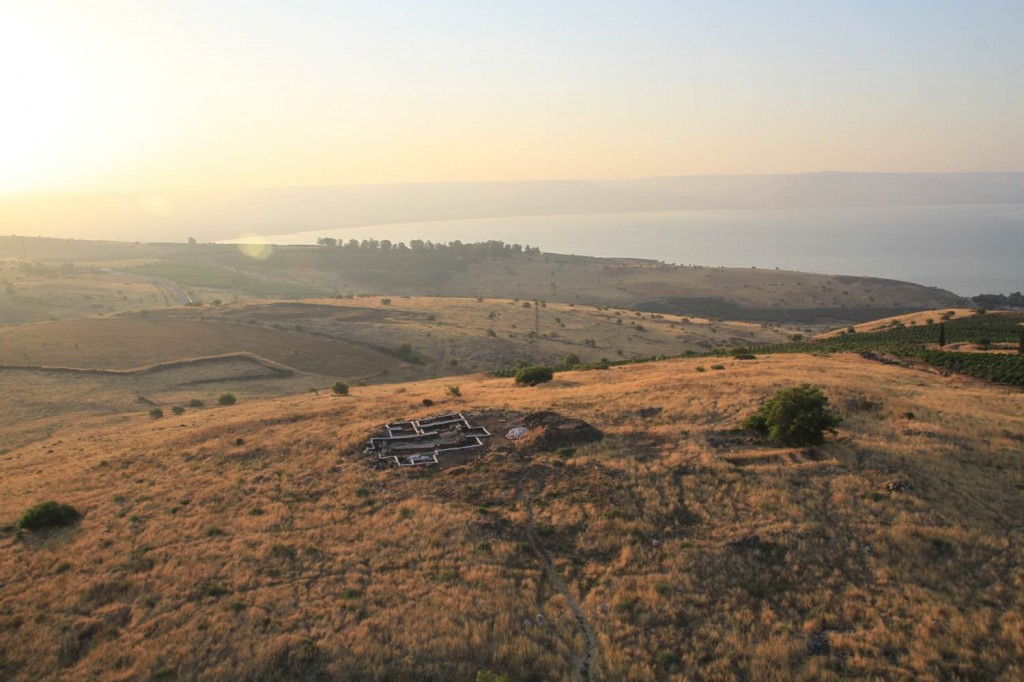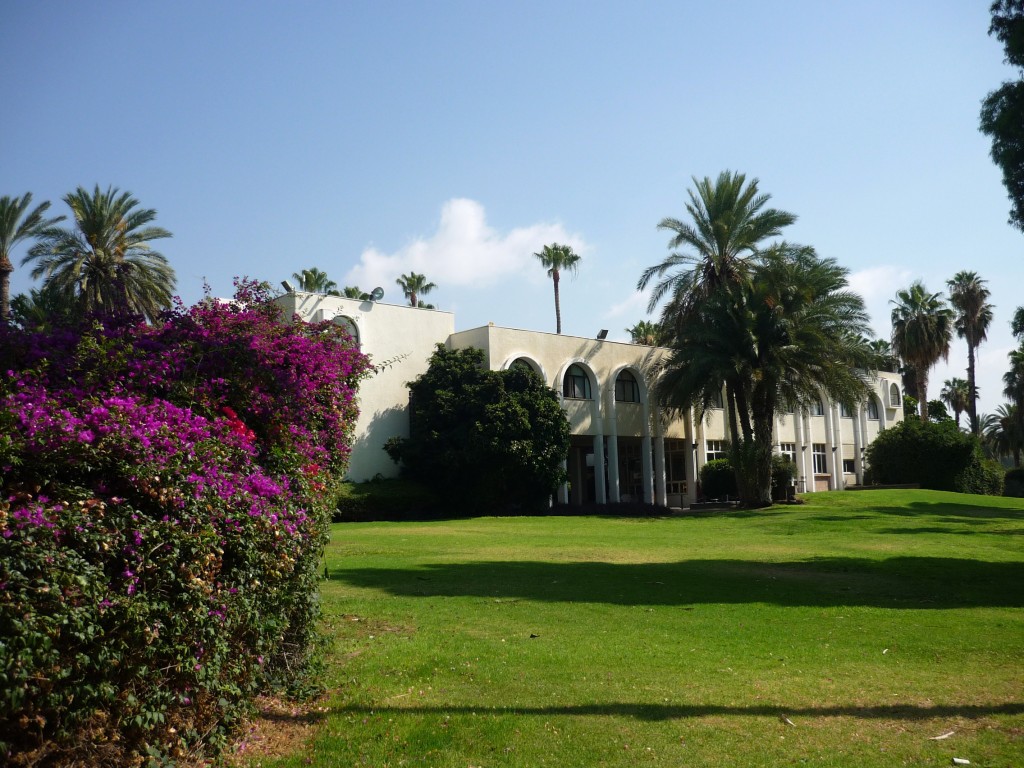by Rick Bonnie and Raimo Hakola
Two members of CSTT, Raimo Hakola and Rick Bonnie, together with their Helsinki-colleague Ulla Tervahauta, are at the moment participating as team members in the archaeological excavations of Horvat Kur, a hilltop site situated north of the Sea of Galilee (Israel). Unlike previous seasons (2008, 2010–2013), this year no excavations will be conducted at the site. Instead, the research team carries out a two-week study season (June 22–July 6) in the lab at the youth hostel of Karei Deshe, where finds and architecture uncovered in previous seasons are being meticulously analyzed in preparation of the final excavation report of the synagogue. Raimo and Rick write this week in a more general manner about the excavations at Horvat Kur, and will elaborate next week in more detail on the different individual tasks carried out during this study season.

The excavations at Horvat Kur fall under the direction of the Kinneret Regional Project, an international archaeological expedition under the auspices of the University of Bern (Switzerland), the University of Helsinki (Finland), Leiden University (the Netherlands) and Wofford College (USA), in collaboration with the Finnish Institute in the Middle East. Aside from conducting excavations at the Early Iron Age settlement of Tel Kinrot, the Kinneret Regional Project has focused from 2007 onwards its main attention on the site of Horvat Kur, a small hilltop settlement overlooking the Sea of Galilee (see Photo 1). The excavations at Horvat Kur are directed by Prof. Jürgen Zangenberg (Leiden University) and co-directed by Dr. Stefan Münger (University of Bern), Prof. Byron McCane (Wofford College) and, from Helsinki, Dr. Raimo Hakola.
The settlement of Horvat Kur contains the remains of courtyard houses that can be dated to the Byzantine period (324–640 CE), some of which have been partially revealed during excavations in 2010 (Area C). However, the archaeological team has mainly focused its attention on an area (called ‘Area A’) where over the course of several seasons of excavation (2008, 2010-2013) the structural remains of a synagogue have been entirely exposed. The synagogue measures c. 11.5 x 16 m, consists of several building phases, and is roughly contemporaneous to the domestic structures discovered at the site.

The aim of this year’s season of the Kinneret Regional Project is to further document and analyze the stratigraphy, architecture and finds of the synagogue area in order to start preparations on the final excavation report of this area. Aside from studying the remains at Horvat Kur, work also continuous on the material remains from Tel Kinrot, such as the restoration of the ceramic material and preparations for a small exhibition in the Paulushaus in Jerusalem. The difference with other seasons—during which most of our days were spent digging in the trenches—is that this year we will be working mainly inside the lab (i.e. the ‘shelter’) in the youth hostel of Karei Deshe, located directly on the shore of the Sea of Galilee (see Photos 2 and 3). The team aims through a meticulous study of the material culture and architecture uncovered in previous excavation seasons to gain more insight into the functioning of the synagogue structure and of the structures surrounding it and beneath it. As a collective, the individual tasks carried out by our team (e.g. the study of ceramics, numismatics and architecture) informs us better on the daily life of the inhabitants of late-antique Horvat Kur, especially with regard to their religious traditions.

Next week we will write in more detail about how the different tasks of these specialists contribute to the illumination of the ‘bigger picture’ of the social and religious reality at Horvat Kur. To be up-to-date about the findings of the Kinneret Regional Project, please check our website and ‘like’ our official Facebook-page.

